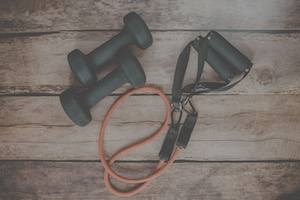Deep cleaning car's interior has benefits
Detailing is to your car what a day at the spa is to your body.
It's meticulous attention and tender loving care given to every tiny little detail. That, and an excessive use of cotton swabs.
"Detailing" - a word car buffs invented to describe the process of deep-cleaning a car's interior - is a significant investment of time and effort, but it has its benefits, including:
A spic-and-span interior that will impress your
a. client
b. co-workers
c. date
d. spouse
e. all of the above
A spotless interior will enhance the resale value of your car.
Alan Paegelow, owner of A&A Royal Auto Trim in Kansas City, Mo., is a detailing specialist. He says a dirty, cluttered car interior tends to stay dirty and cluttered, but a clean interior tends to stay clean.
"Once you've spent the time cleaning it, you're extra motivated to keep it clean," he says.
Paegelow says that a cool, windy day is the optimum weather for detailing your car.
"The breeze helps dry the shampooed carpet and upholstery. And the glass will dry without streaking."
Here's the step-by-step process Paegelow recommends:
1. Clean the car of all clutter and litter. Check under the seats and floor mats for valuable items that may have been dropped. Paegelow says a powerful vacuum can suck up a ring, necklace or bracelet, let alone dollar bills and change.
2. Using the soft-bristle paint or pastry brush, brush out crumbs, dirt, dust and other debris from cracks and crevices, especially around the console, emergency-brake handle, ashtray and cup holders. For stubborn dirt in crevices, use cotton swabs and rubbing alcohol. This step is the most tedious and most frequently overlooked, but perhaps more than any other part of the process will give your car that "as good as new" look.
3. Vacuum next, starting with seats. Use a narrow, flat attachment to get down in between the back of the seat and the bottom seat cushions and into door pockets and in the consoles.
4. Remove the floor mats and vacuum those outside of the car, on your driveway or garage floor.
5. Vacuum the floors, including under the seats. Don't forget to vacuum the trunk and cargo areas.
6. Using a terrycloth hand towel and a dilution of household cleaner, wipe down the vinyl parts of the interior, including the dash, console, doors and seatbacks (if vinyl).
7. With the lint-free cotton cloth, apply vinyl conditioner to vinyl parts: dash, console, seatbacks, etc. Paegelow says that vinyl conditioner can build up over time and will actually attract and accumulate dust and dirt. "These products can get cloudy and filmy over time," he says. "To avoid this, they should be removed before reapplication. A weak rubbing alcohol solution will do the trick."
8. Using glass cleaner and paper towels (or microfiber cloth), wipe down glass, including mirrors and exterior glass. This step may need to be repeated to avoid smearing and streaking. If your windows are tinted, do not use ammonia-based cleaners, as these may damage the tinting film. Clean tinted glass with distilled water.
9. Using spot cleaner or shampoo, remove stains and ground-in dirt from mats and floors. Use the stiff-bristle brush if necessary on difficult spots.
10. Treat leather using lint-free cotton cloth and leather conditioner.
11. Allow floors, mats and seats to fully dry before returning mats to the car and before driving the car.
Additional resources: www.consumerreports.org, www.diynetwork.com, and www.edmunds.com
Shop vacuum (or other portable vacuum) with hose and attachment nozzlesCarpet shampoo and/or upholstery shampoo or spot cleanerGeneral household cleanerLeather conditioner (if you have leather seats and trim)Vinyl conditionerRubbing alcoholTerrycloth towels. These are preferred over paper towels because their fibers get down into crevices.Soft cotton, lint-free cloths (such as an old bandanna or a diaper)Paper towelsGlass cleanerCotton swabsStiff-bristle hand brushNew soft bristle paint or pastry brush.













